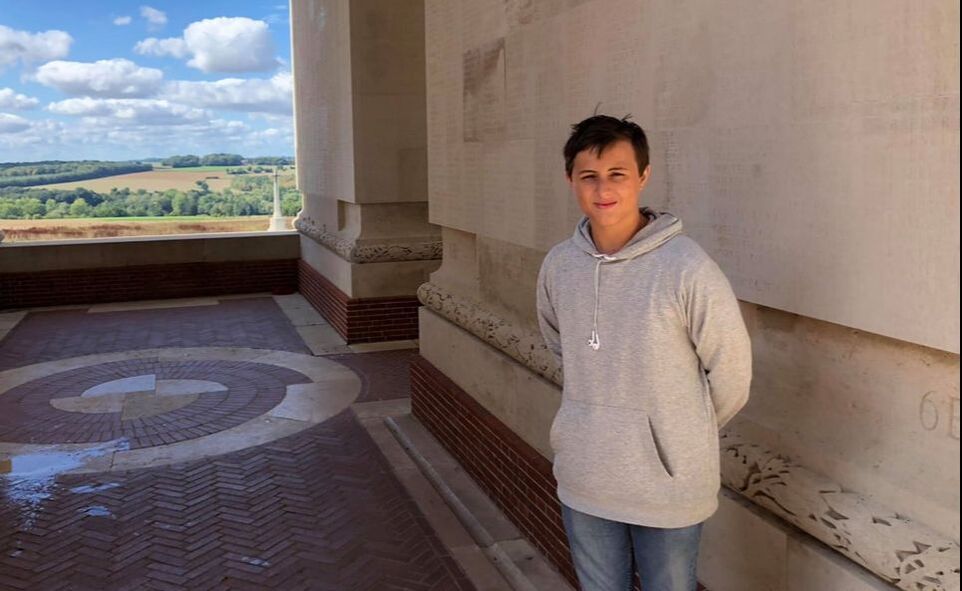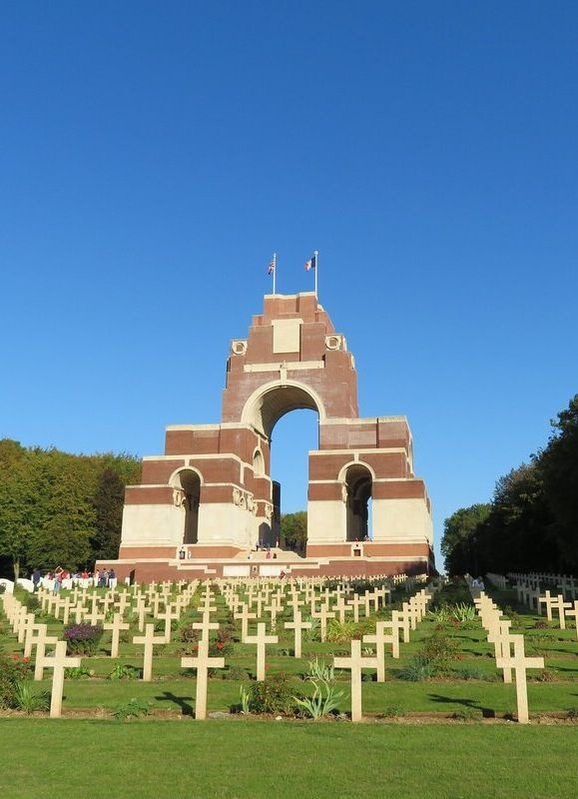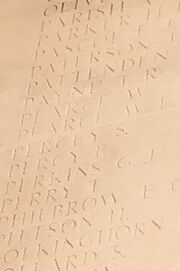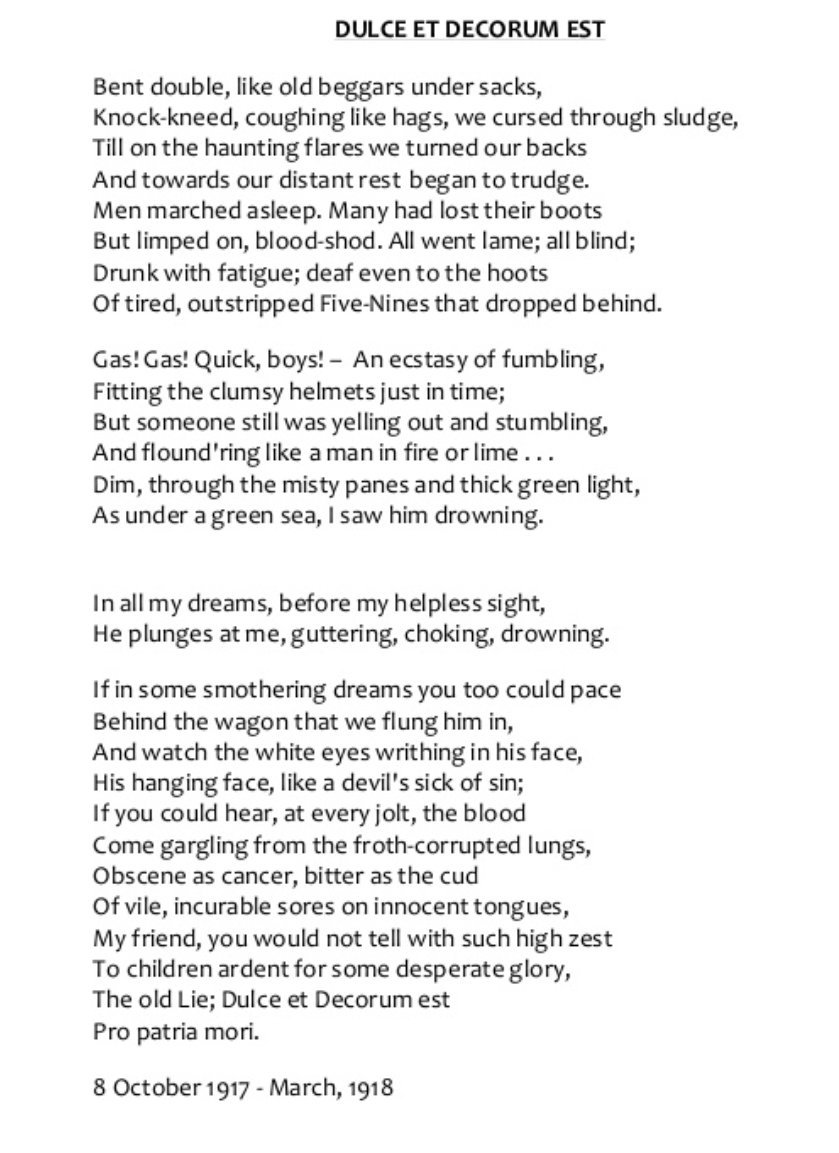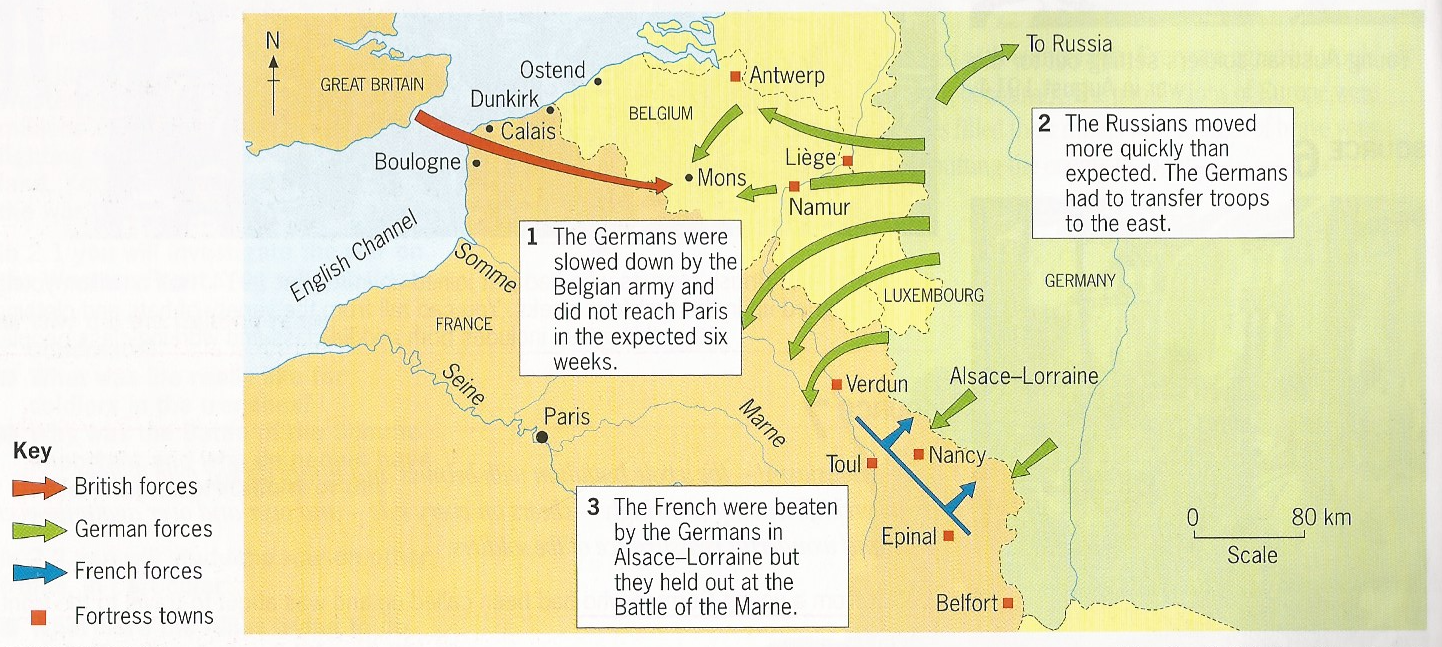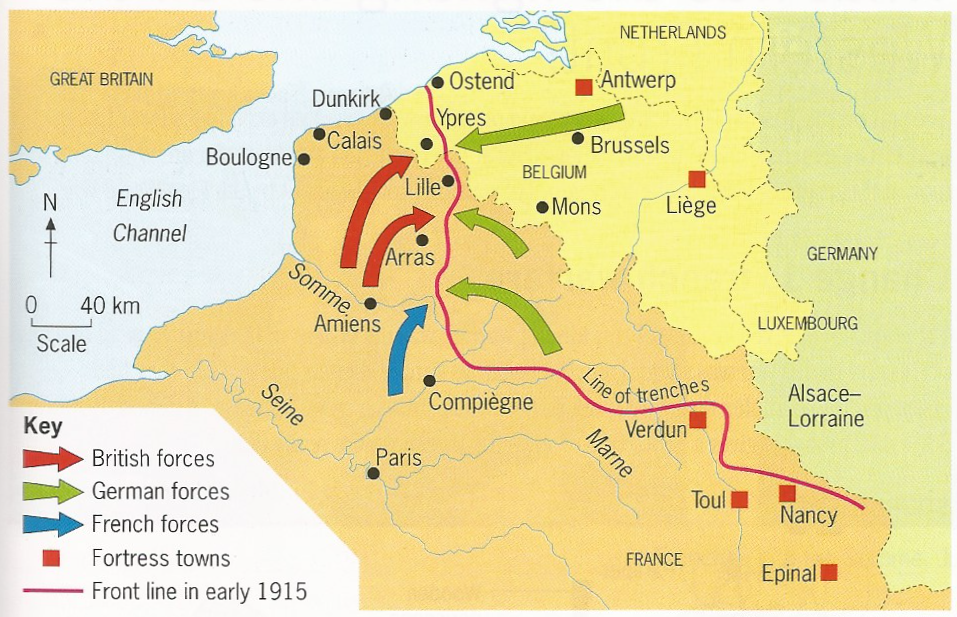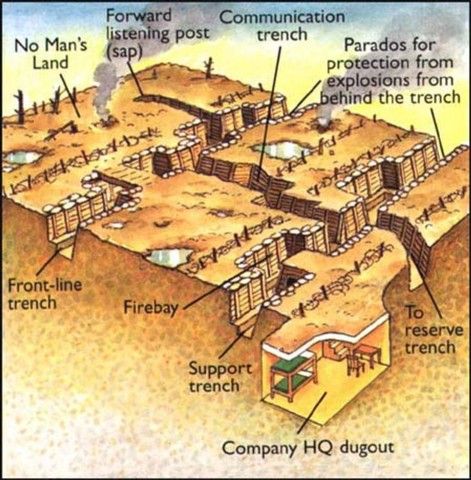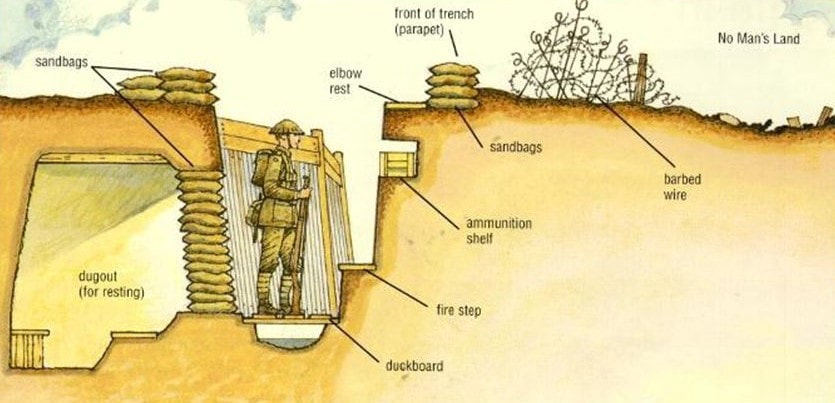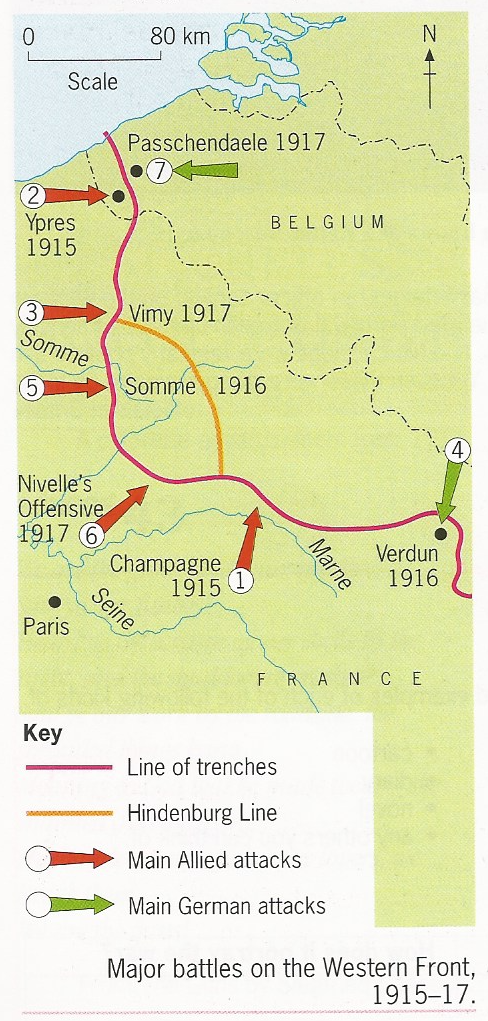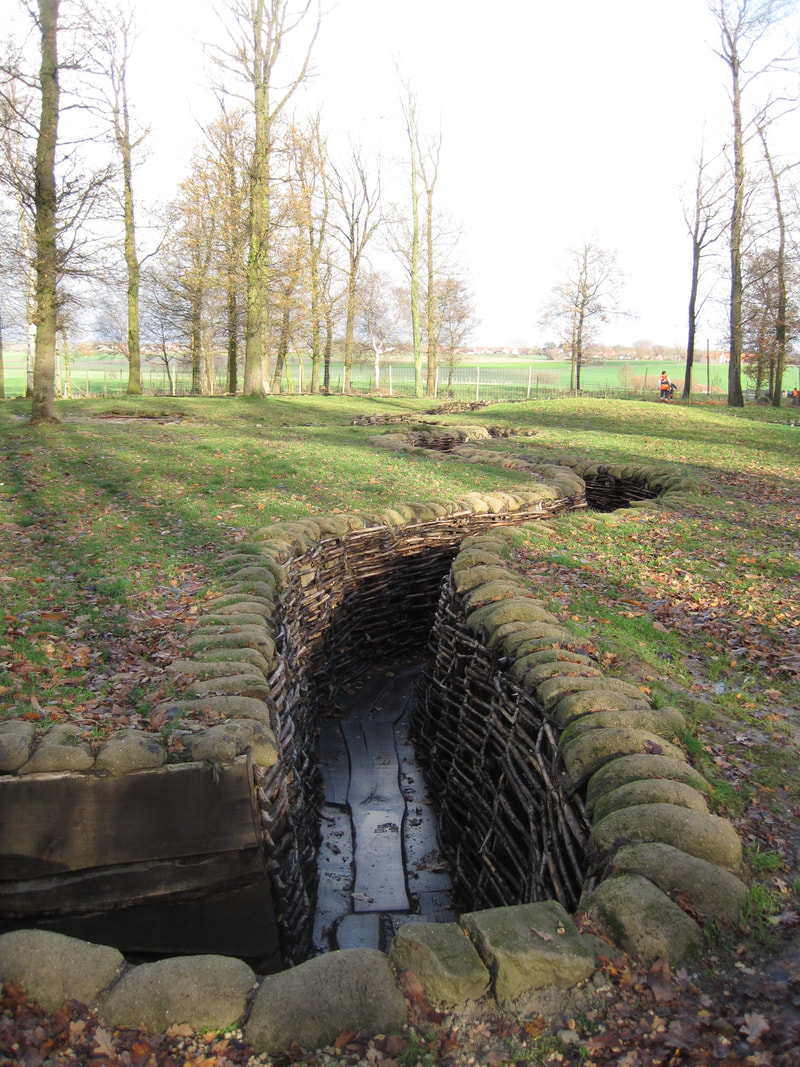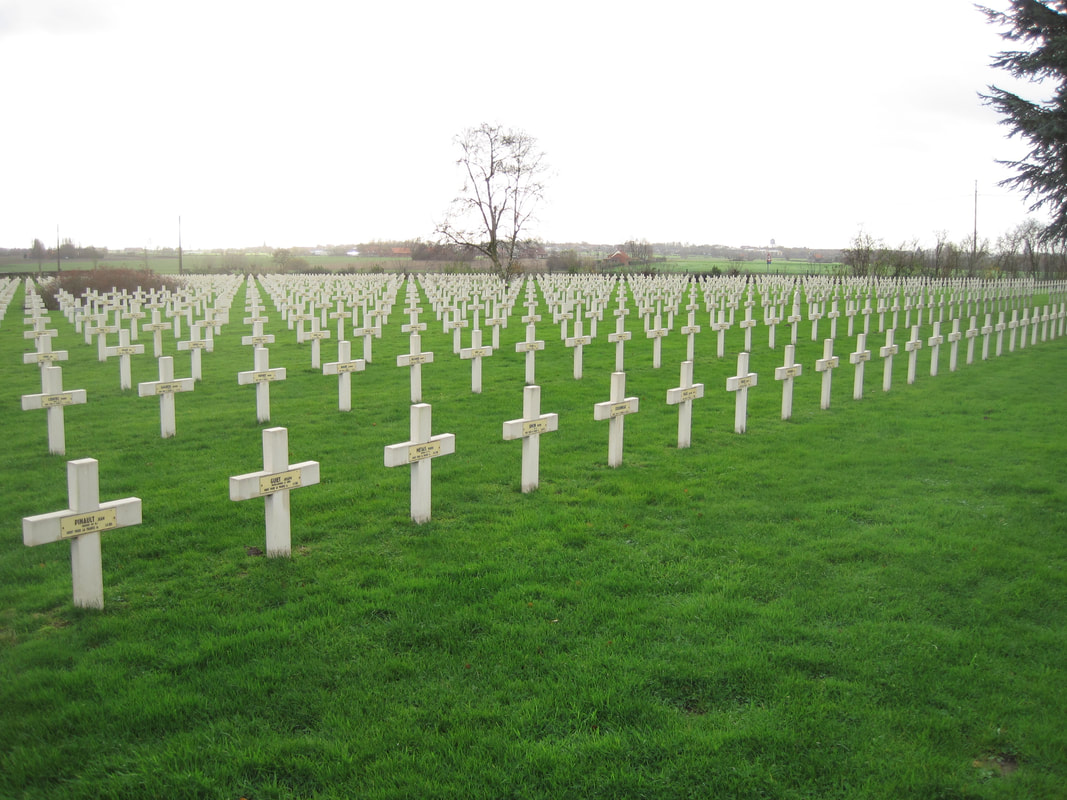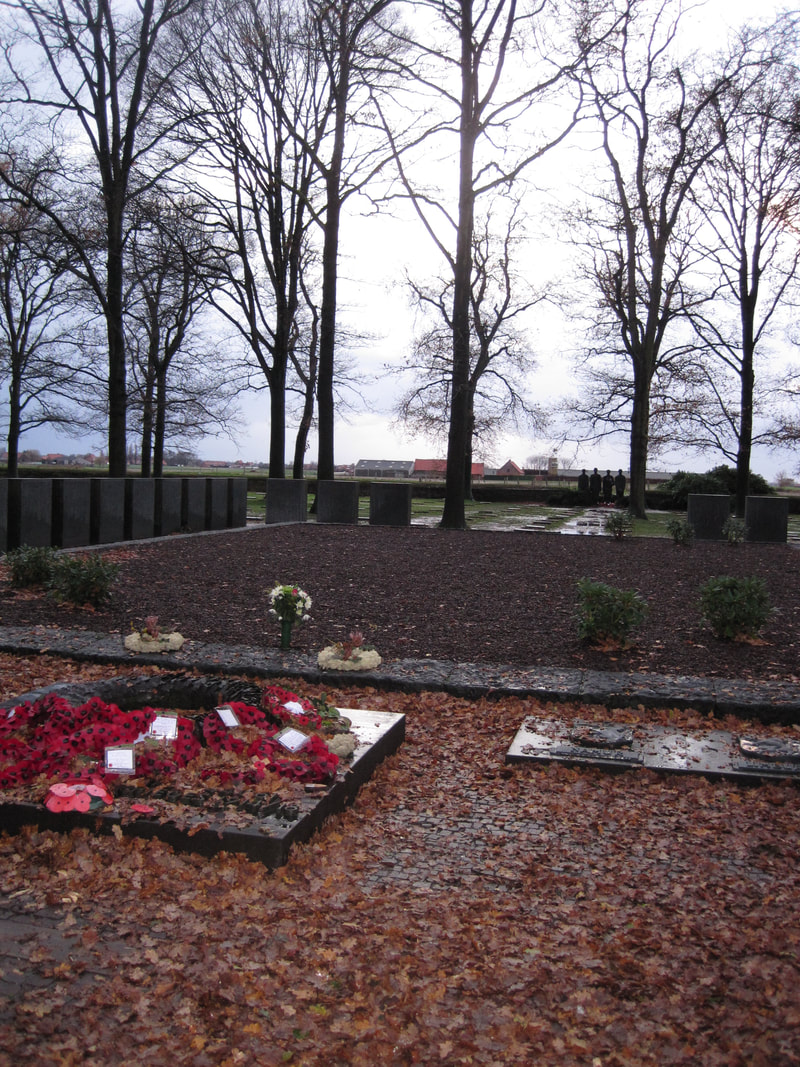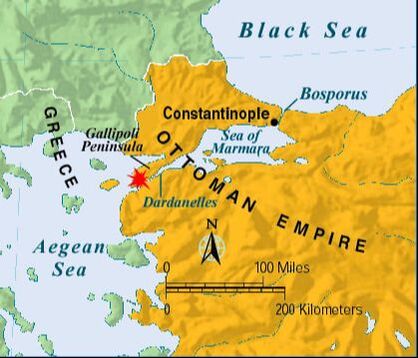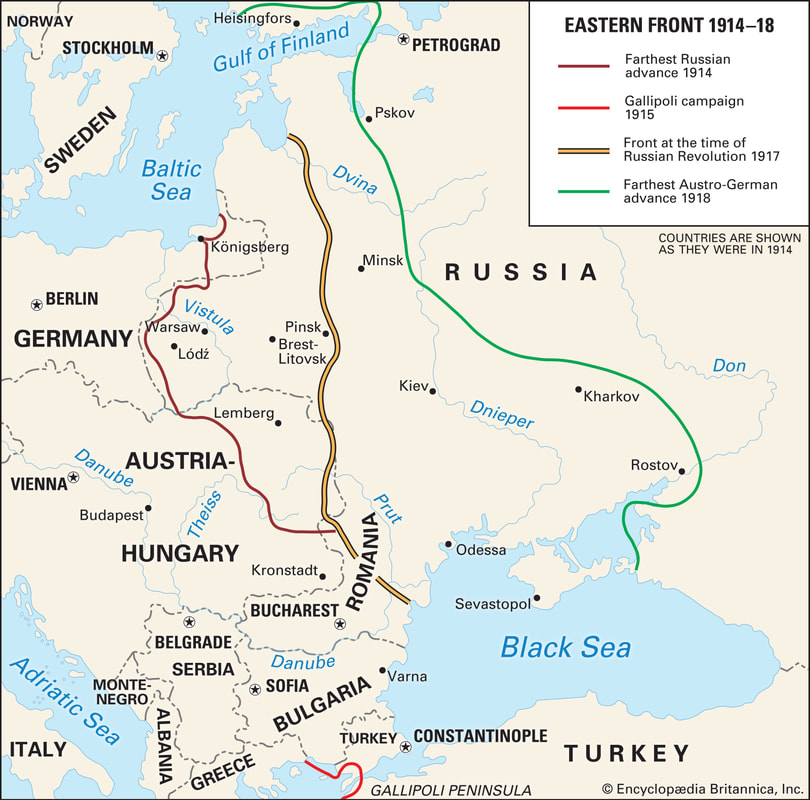Lesson 5 - The nature of the First World War - Reality
First, a little reminder of what we looked at last year....
Sidney Percey, The Thiepval Memorial, la Somme, France
|
The Thiepval Memorial to the Missing of the Somme is a war memorial to British and South African servicemen who died in the series of Battles on the Somme during the First World War between 1915 and 1918. Every name that is listed is a man killed whose body was never recovered or identified. There are some 72,337 names.
One of the names is that of Sidney Percey (right). Born in Cardiff, Wales in 1891, he volunteered to fight just after Christmas 1914. He briefly returned home after the birth of his daughter in February 1915. He was killed at the Battle of Loos in 1915. According to the family history, he was killed by an exploding mine. |
He was 23 years old. As with most of the deaths in war in the 20th century, he never saw who killed him. His daughter born in 1915 was my grandmother. The boy above in the photo taken at Thiepval in 2018, is his great, great grandson. Below is Dud Corner cemetry Loos, near the battlefield.
The First World War was the first modern 'total war', (see next lesson) a war that involved all sections of society contributing to the war effort. Millions of young men were conscripted to fight and endure horrors of trench warfare that lasted four years. Amongst those who fought were many young artists and writers who used their creativity to attempt to make sense of the carnage.
Dulce et Decorum Est - Wilfred Owen
|
Rudyard Kipling's son John was also killed at Loos. The Battle of Loos was significant because it marked the first use of poison gas by the British - chlorine in this case - as a weapon of war. The Anglo-Welsh poet Wilfred Owen wrote one of the most famous English poems of the 20th century about the experience of a gas attack. It is very different to the poem by Rupert Brooke that we looked at last week. It continues to be regularly taught in English and history lessons around the world. In November 1918 he was killed in action at the age of 25, just one week before the Armistice.
|
The war plans fail
The Schlieffen plan was put into operation. The German army invaded Belgium on 4 August. After a successful initial advance they were slowed at the Battle of Mons by Belgian resistance aided by the British Expeditionary Force. The video map (below right) provides an excellent visual overview of the troop these troop movements.
French war plans faired no better. On 20 August the German forces defended the frontier from a attack which cost the French 200,000 men in 12 days. The French abandoned Plan 17, and regrouped their forces to defend Paris from the advancing Germans. But the German Supreme Commander Moltke had to pull 100,000 troops out of the army advancing on Paris because the Russians had mobilised far more quickly than expected and had already invaded Germany. The German army also faced another problem. Their advance had been so fast that their supplies of food and ammunition could not keep up. At the Battle of the Marne the combined British and French forces were able to stop the German advance and then counterattacked and pushed the Germans back to the River Aisne. Neither side could make any progress and by 8 September troops on both sides were digging trenches to protect themselves from snipers and shell fire. Soon after, they added machine guns and barbed wire.
|
The Battle of the Marne was a turning point. In a desperate move to try and prevent this on12 October the German army began a series on manouvres to try and outflank the French and British. It became known as ‘the race to the sea’. The key battle was the first Battle of Ypres from 12 October to 11 November 1914. The BEF lost around 50,000 men and the Germans probably 100,000, but they kept control of the English Channel ports, which meant they could be supplied with equipment and reinforcements. In December the French army tried to break through the German lines in Artois and Champagne, but they were beaten back with heavy losses. As 1914 ended, the fighting had reached a stalemate which was to last until 1918. Millions of troops were dug into a line of trenches that stretched from the sea in the west to the Alps in the east. It became known as the ‘Western Front’.
|
Failing to make the breakthrough
From 1915 to 1918 the Western Front was marked by a a series of failures to make a breakthrough. It can be easily be explained. The techniques and the weapons were better suited to defence than to attack. It was much easier to defend a position than to attack one.
|
|
|
Early in 1915 the French lost many thousands in an unsuccessful offensive in Champagne (see map left). The British gained some ground at Neuve Chapelle in March but at a heavy cost. The Germans were driven back from Ypres in April with heavy losses and the British suffered a setback at Loos in September. (Where my Great grandfather died)
In February 1916 the Germans began a determined battle to capture strategic French forts surrounding Verdun. Attacks were followed by counter-attacks and by July 1916 some 700,000 men had fallen. The French, led by General Pétain, held out, but by the summer of 1916 they were close to breaking. To relieve the pressure, the British led by Field Marshal |
|
Douglas Haig launched their long- planned offensive at the Somme. After a week-long artillery bombardment of German trenches, British troops advanced. On the first day there were 57,000 British casualties. The fighting continued until November 1916 with the loss of 1.25 million men.
|
1917 was very significant to the outcome of the war, America joined and Russia left. On the Western Front the new French commander Nivelle ordered a series of disastrous offensives which resulted in widespread mutiny in the French army. Canadian troops won a breakthrough at Vimy Ridge in April and in June the British exploded 19 mines at Messines (above) that could be heard in London. (See Sebastian Faulkes Birdsong). 10,000 German soldiers were killed.
Finally, in the autumn, the Allies tried to a final breakthrough at the Third Battle of Ypres (Passchendaele below). Heavy rain inhibited the breakthrough and resulted in some of the most horrific experiences of the whole war. |
The war on other fronts
Gallipoli - 1915
In 1915 casualties were mounting on the Western Front and government ministers in London could see no prospect of breaking the stalemate. They began to look for another way to gain a breakthrough in the war. The war planners were attracted to the idea of a knock-out blow against Turkey, whom they considered to be one of Germany’s more vulnerable allies.
In 1915 casualties were mounting on the Western Front and government ministers in London could see no prospect of breaking the stalemate. They began to look for another way to gain a breakthrough in the war. The war planners were attracted to the idea of a knock-out blow against Turkey, whom they considered to be one of Germany’s more vulnerable allies.
|
Winston Churchill, who was head of the navy, and Lord Kitchener, who was in effect overall commander of the war effort, persuaded the government to attempt an attack on the Dardanelles strait, a narrow stretch of water linking the Aegean Sea and the Sea of Marmara. It was intended as a naval attack but too many ships were damaged and sunk so a land invasion was attempted instead. British, French and ANZAC (Australian and New Zealand) troops attacked but the commanders had severely underestimated the power of the defending army. Very quickly Gallipoli became another trench war made worse by the more extreme weather and the lack of reinforcements. After eight months of fighting and 500,000 casualties on both sides, the allied were forced to withdraw. |
The Balkans and Middle East
The Allied force at Salonika in Greece did not fare much better than that at Gallipoli. The aim was to land at Salonika, help Serbia to defeat Austria and Bulgaria and then march through what was described as the ‘soft underbelly of Europe’ to create a new front against Germany. Greece was neutral and wanted to stay out of the war. Russia was not particularly happy either about the Allies working with Greece. Greece and Russia were bitter rivals in the Balkans. The Allied landing took place in October 1915 with a mixed force of British, French, Serb, Italian and Russian troops. They were immediately bogged down by Bulgarian resistance. Here again, as on the Western Front, a stalemate developed. The main hazard facing the troops was not enemy action but disease - particularly malaria and dysentery. At any one time so many troops were ill that attempts to plan attacks were thwarted.
The Allied force at Salonika in Greece did not fare much better than that at Gallipoli. The aim was to land at Salonika, help Serbia to defeat Austria and Bulgaria and then march through what was described as the ‘soft underbelly of Europe’ to create a new front against Germany. Greece was neutral and wanted to stay out of the war. Russia was not particularly happy either about the Allies working with Greece. Greece and Russia were bitter rivals in the Balkans. The Allied landing took place in October 1915 with a mixed force of British, French, Serb, Italian and Russian troops. They were immediately bogged down by Bulgarian resistance. Here again, as on the Western Front, a stalemate developed. The main hazard facing the troops was not enemy action but disease - particularly malaria and dysentery. At any one time so many troops were ill that attempts to plan attacks were thwarted.
|
When Turkey had entered the war it threatened Britain’s oil supplies in Persia (now Iran) and its territory in Egypt. Turkish soldiers fought well and were ably led and supported by German officers and technical experts. They had such success in Mesopotamia that the Allies had to send 600,000 troops there. They sent a further half a million to Palestine. Between 1916 and 1918 British, Australian, New Zealand and Indian troops gradually drove the Turks back through Palestine towards Turkey itself. The Turks, as well as facing superior forces, were harassed by guerrilla warfare from the many Arab tribes who wanted independence from Turkish rule and led by TE Lawrence of Arabia. The film opposite places the war in the Middle East in its longer historical context and is well worth watching.
|
|
The Eastern Front
It is important to note when you are asked to provide a summary of the main developments in the First World War you include events in eastern Europe. As in the west, there were some trenches, but warfare did not get bogged down in the same way.
|
At the start of the war, Russia surprised everyone. It quickly mobilised two huge armies and invaded East Prussia in August 1914. As we saw above, the Germans had to take an extra 100,000 troops away from the Western Front to fight them.
The Russian armies enjoyed some early successes but at the Battle of Tannenberg they suffered a significant defeat by German forces. The Russian soldiers were badly led, poorly equipped and underfed. The Russians were more successful against the Austrian forces. In 1915 they invaded the Austrian province of Galicia. Although the Russians were defeated at Gorlice in May 1915, it took four more months for the Austrians to drive them out of Galicia altogether, and to do so the Austrians needed substantial reinforcements from the Germans. However, this defeat put a terrible strain on Russia - there were 2 million dead or wounded in 1915 alone. Russia's war was helped when the focus of the German and Austrian war effort shifted to Italy, Turkey and the Balkans. |
In the summer of 1916, General Brusilov (Brusilov Offensive) a stunning offensive against the Austrians. Three Russian armies broke through the Austrian lines and captured the city of Lutsk on 8 June. But by August, the Russian advance was running out of steam. Another 500,000 Russians were dead or wounded, adding to the half million dead or wounded already in 1916. Such losses intensified Russia’s domestic problems. (see Matu 8 - Russian Revolutions)
Activities
This lesson refers to a number of battles (in red) in a number of places at a number of times between 1914 and 1917. It is not easy to keep track and remember all these events.
1. Explain why the expected war of movement became a war of attrition with no significant breakthrough. You need to refer to the battles of 1914 to explain why it became a war of attrition. But you also need to choose examples of other battles (e.g. the Somme or Verdun) to explain why there was no significant breakthrough.
2. Watch the documentary extract from People's Century 'World War 1 - Trench warfare the soldier's experience'. It contains many references to the experiences of ordinary soldiers who fought in the war. With reference to the film, describe five different experiences of trench warfare for those who fought it. It is a good idea to include diagrams of trench warfare in your notes. Examiners like to use these in their sources.
1. Explain why the expected war of movement became a war of attrition with no significant breakthrough. You need to refer to the battles of 1914 to explain why it became a war of attrition. But you also need to choose examples of other battles (e.g. the Somme or Verdun) to explain why there was no significant breakthrough.
2. Watch the documentary extract from People's Century 'World War 1 - Trench warfare the soldier's experience'. It contains many references to the experiences of ordinary soldiers who fought in the war. With reference to the film, describe five different experiences of trench warfare for those who fought it. It is a good idea to include diagrams of trench warfare in your notes. Examiners like to use these in their sources.
Extension, extras and additional video resources
Make a timeline of the battles of 1915-17 and include a brief description of its significance. It is important that you keep the events in chronological order irrespective of the location of the battle. You could try using the Knightlab software we used last year, see Sydney's work below.
Make a timeline of the battles of 1915-17 and include a brief description of its significance. It is important that you keep the events in chronological order irrespective of the location of the battle. You could try using the Knightlab software we used last year, see Sydney's work below.
We can only dedicate a couple of lessons to the nature of the First World War and I can understand if you want to learn more. The following films are recommended.
|
|
|
|
|
|
|
|

